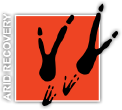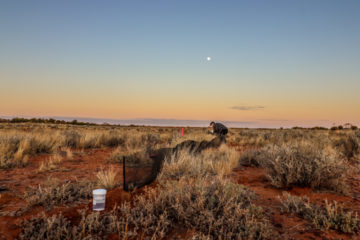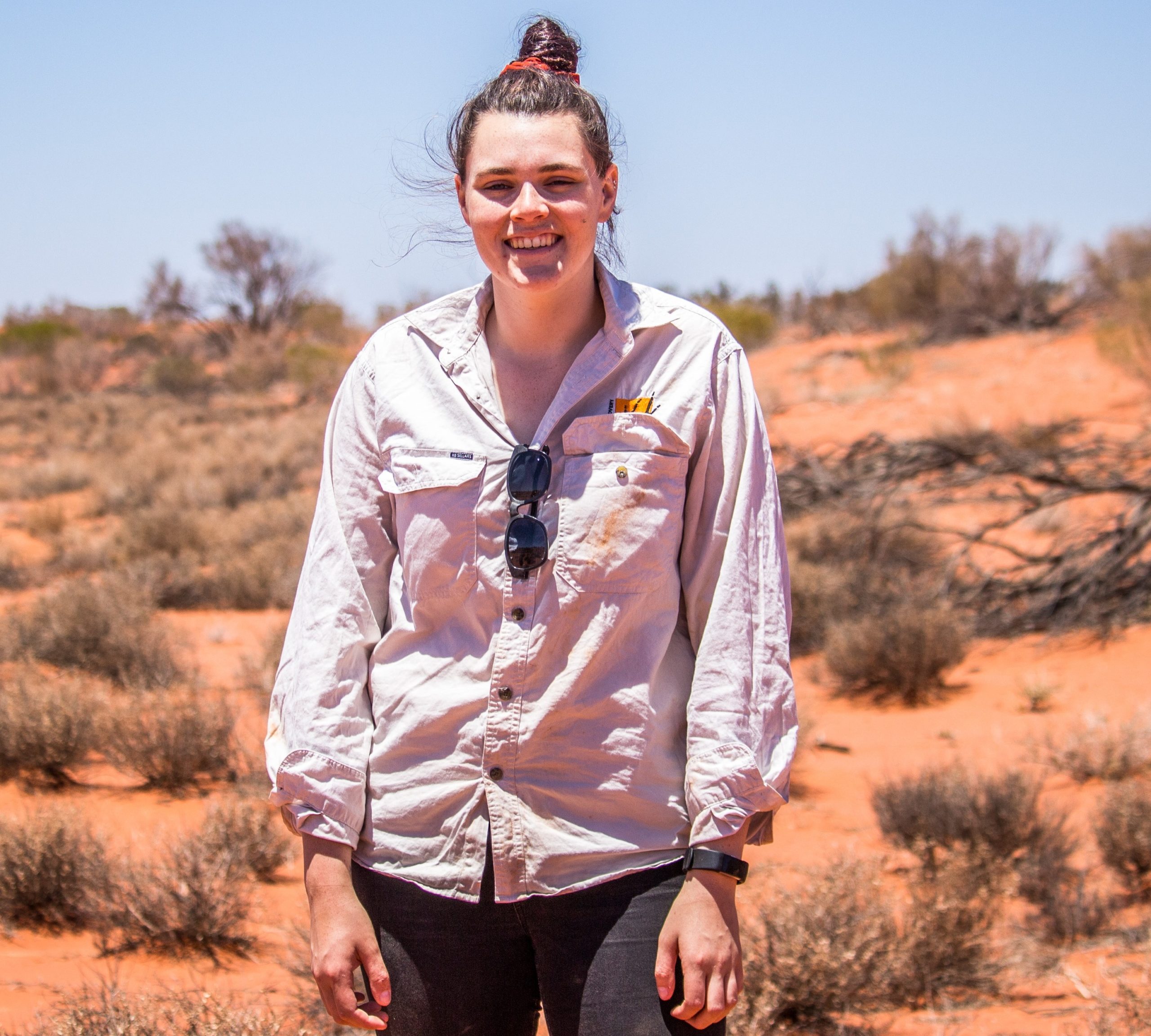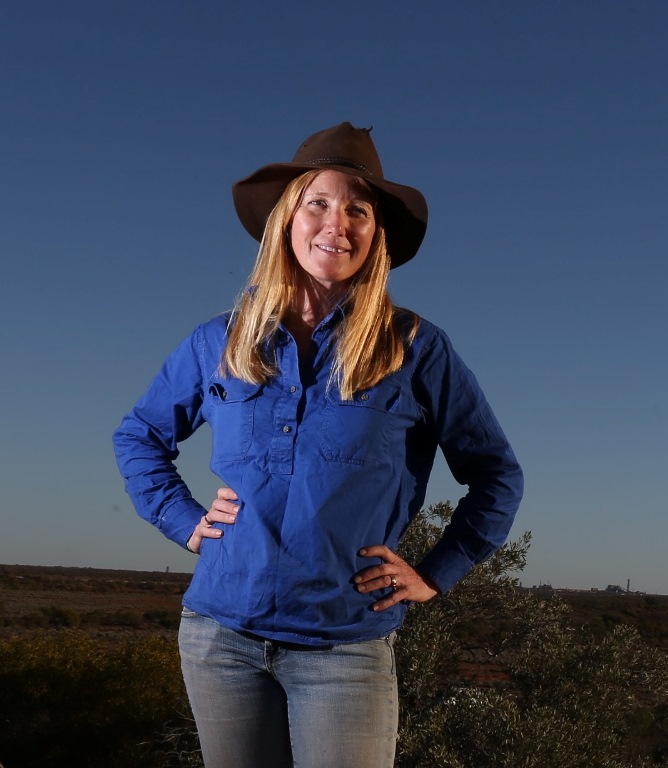By Jannico Kelk
Hi I’m Jannico Kelk and I work as an Ecologist for a number of consultancies. I’m the Acoustic Market Developer at Titley Scientific and I’m currently the Conservation Intern at Arid Recovery. I have a huge passion for threatened species, wildlife technology and wildlife photography. Shameless plug, you can see my wildlife photography here.
When I was asked to write this blog I almost scoffed because I haven’t reached my end goal and there are still times that I struggle however I am well and truly on my way.
So, how did I get here?
Well, mostly it has been a combination of blind luck, being in the right spot at the right time, trying (emphasis on trying) to make good choices and networking. But, the biggest contributors to my short journey was putting myself out there and having supportive mentors and friends. This can be quite confronting at first especially if you’re not used to criticism. However, more often than not, people will be supportive, willing to help and listen to you whinge when things get hard.
After high school, I decide to take a gap year, earn some money and travel through rural Thailand for several months rather than immediately going to University. It was simultaneously the best and worst decision ever. I got a taste for travelling, which over the years has given me a chance to explore my passion for wildlife watching, photography and eventually conservation, whilst continually exhausting my bank account.
I eventually went back to University to study Civil Engineering because I knew two things:
- I was good at maths; and
- I was told engineers made a lot of cash.
I quickly learnt that:
- Being good at something doesn’t necessarily mean you’ll enjoy it;
- Deciding your career path on money wasn’t right for me.
I soon dropped out and took time to play music in bands and travel to remote parts of Australia searching for reptiles and frogs to photograph (this is called herping).
Herping almost became a way of life for me. It was all I read, thought, and talked about. I spent all my money and free time herping. If I wasn’t herping, I was planning a herping trip. As you can tell, I was very popular at parties, people love seeing photos of the latest skink you discovered.
I eventually met my partner, who was also a very passionate herper and wildlife photographer. As soon as we hooked up we started travelling over seas searching for more reptiles and frogs.
Sidenote: being in a relationship with someone who was equally as passionate about wildlife has been a continual motivator and huge driver for us to pursue a career in ecology.

This continued for a number of years and to fund this lavish lifestyle of eating two minute noodles, booking cheap flights and searching for the perfect headlamp that is optimal at reflecting frog eyes, I started working as a fauna spotter catcher.
Fauna spotter catchers (FSC) are people who are employed to capture and relocate wildlife prior to and during the construction of a development. This includes mines, gas pipelines, highways and urban developments. It’s predominately used as a damage mitigation practice to lower the risk of native animal death. How did I get into this industry without a degree? Well this is what I meant about good timing and putting yourself out there. This was during the gas/mining boom in western Queensland. Some of my herper friends happened to work as FSC and I asked them for a job. I knew my chances were low but as it happens one of their co-workers decided to reverse a car into a parked excavator which is generally a big no-no wherever you work. Subsequently, they needed someone to replace the now ex-co-worker immediately.
I drove myself out to western Queensland, went to the office and from that I was working in the environmental industry without any standardised qualifications. I was just passionate about wildlife and I knew how to handle and ID most animals.
However FSC wasn’t my dream job. It paid well and I got to travel looking for animals but the land-clearing component eventually wears you down. I started volunteering on wildlife surveys for a number of organisations both private and government. These included full fauna/flora surveys, crocodile surveys in the Kimberley, spotlighting for gliders and a lot more.

I quickly realised (I lied, it actually took me 2-3 years to understand this) that I wasn’t going to move forward without a qualification so I decided to go back to university. This time studying something I was extremely passionate about. I enrolled myself at Southern Cross University (Lismore NSW), in a Bachelors of Environmental Science. The majority of the degree was online and I was able to work on a Windfarm in QLD as a FSC at the same time. It was difficult but my boss at Greentape Solutions was very understanding and accommodating of my education pursuits.
During my time as a FSC I spoke to as many working Ecologists and Researchers as I could. I wanted to know what skills I needed, or were desirable from an employer’s perspective. I was not shy about this. I would straight up ask “what do I need to do to become part of your team”.
Generally the answers were:
- Proficiency in GIS (mapping software);
- Report writing;
- Statistics;
- Volunteer, volunteer, volunteer;
- Be effective in the field (know how to change a tyre, 4wd, work a chainsaw, 1st aid, work remotely etc.)
- Being easy to get on with in the field.
Knowing that, I designed my Bachelor’s degree to involve as much of the above as possible. I immediately found the wildlife professors at Southern Cross University and I became a nuisance to them asking if they needed any help until they eventually said yes. I started by volunteering on threatened frog surveys, it certainly helped that I was quite good at finding frogs at this point due to years of herping. This eventually led to my first job in research. I became a Research Assistant, which was a fancy name for frog catcher, in this time I also applied for as many programs as possible. Subsequently, I was awarded a scholarship to Sumatra where I was able to peer into the conflict between elephants and villagers adjacent to protected areas (newsflash, it’s complicated). I was also given a chance to see how an NGO runs behind the scenes and on the ground.
I ended my Bachelors with an undergradate project where my Professor (Dr. Ross Goldingay) gave me the mentorship, trust, technology and data to create an eco-acoustic recogniser for Yellow-bellied Gliders (Petaurus australis), a large threatened gliding mammal from eastern Australia. Essentially, I put up waterproofed recording devices in the forest, recorded the glider vocalisations and used software to detect the calls. From there we could make an estimate on where gliders did and did not occur.
After I graduated from SCU I had a degree under my belt, several years of field experience, volunteered with a number of conservation organisations internationally and domestically (including Arid Recovery in 2019), new contacts and new interests (primarily in eco-acoustics and threatened species conservation). By that time I was also working in consulting, writing reports including Environmental Assessments, Bushfire Hazard Reports and Vegetation Management Plans

I mentioned earlier that networking was critical. Here are four reasons why:
1) During my time as a FSC I met a young Researcher named Julie Dawson. She specialised in bats and bat call analysis. She saw my interest in eco-acoustics after we had worked and had a few drinks together over the years. In 2019 she then asked if I would like to work with her at Titley Scientific. It was casual work and my job was to work at conferences explaining how to use Anabats (devices used to record bat calls). I said yes within 0.5 of a second.
2) I was extremely lucky as a previous employer rang me and said they needed an Environmental Advisor on a gas pipeline in Western Queensland. This was immediately after I graduated and subsequently, I was working as an “Enviro” a few days after graduating.
3) I had become known within wildlife photography and social media. Because of that I have made plenty of good friends who enjoy wildlife photography. One of these was a Senior Ecologist who ran Frog Friday. She knew that I had experience with bats and needed a casual to help on bat surveys. That turned into a job as a graduate Ecologist.
4) After volunteering with Arid Recovery, primarily so I could photograph Western Quolls (Dasyurus geoffroii ) as part of a personal long form photography project, I decided to apply as a 2020 Conservation Intern. In February 2020, I was called to let me know that I was successful. I know having that in person interaction was crucial and probably gave me the edge over the other very talented and amazing applicants.

My journey has just begun, and I’m looking forward to where it will take me. My end goal is to work in conservation. One thing I have learnt at Arid Recovery is that working in conservation doesn’t always mean surveying wildlife and feral animal control, but it entails a whole range of other activities. Including community engagement, building fences, and working with other stakeholders with a common goal. Arid Recovery has encouraged me to think and make decisions pragmatically to get the best possible outcome.





















